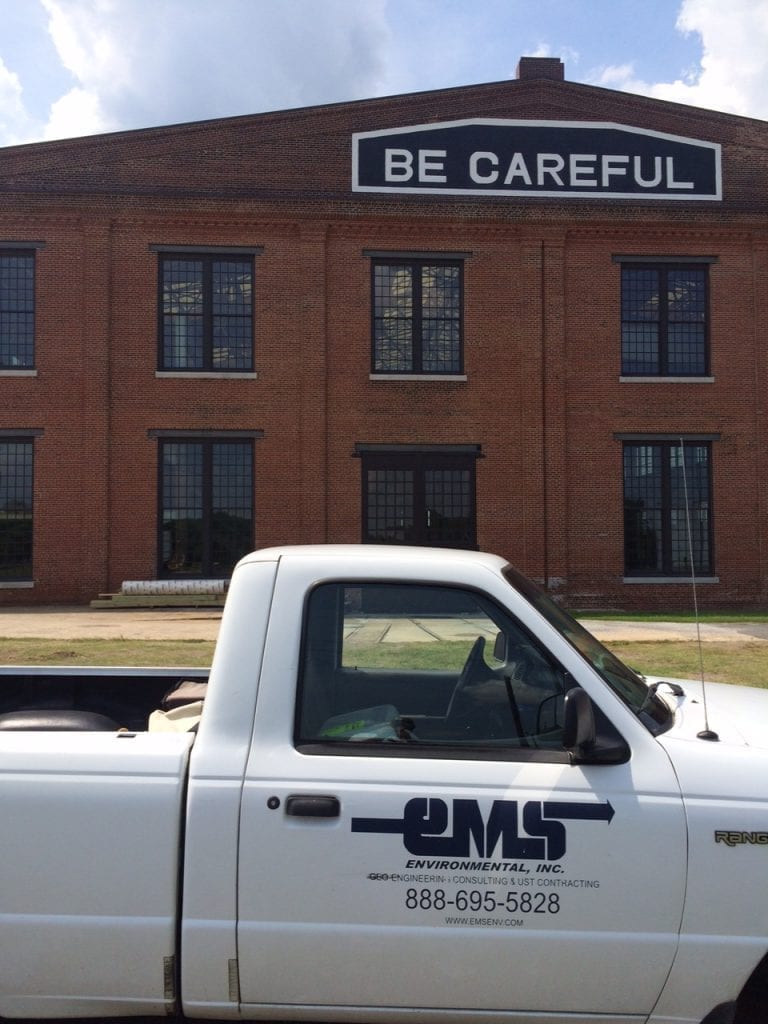
You are buying a property that has an underground storage tank (UST). Is there anything special you should be worried about? The short answer is YES!
I get this question all the time and there are two areas of risk that I point out:
Out of Compliance UST Systems – Out of compliance UST systems can be very expensive to correct. From tank registrations and equipment certification to spill prevention and leak detection, there are a lot of moving parts (literally) and a lot of changing regulations and equipment specifications.
Leaking UST Systems – Leaking UST systems, or systems with a history of leaks, can be very, very expensive to correct. EPA regulations only become more strict and mandated cleanup obligations can easily cost more than a property is worth.
USTs are often essential to the business or facility, so we cannot always suggest simply removing the tank or tanks. However, there are ways to mitigate and manage the risk associated with underground tanks.
Manage your risks by following these three must do steps prior to completing the transaction:
1. Determine What Type of Fluid is in the Tank(s)
From a regulatory perspective, there are different rules for tanks that house various substances. For example, tanks that contain gasoline, diesel fuel or hazardous chemicals are highly regulated and have stringent registration, inspection and testing requirements. Conversely, fuel oil tanks that are for on-premises use are, in most instances, not regulated.
Spills or leaks from tanks can result in varying degrees of environmental impact depending upon the type of substance that was spilled and what sensitive receptors are nearby. It is important to find out what is currently and has historically been in the tanks.
Beware of declarations that a tank is empty and taken out of service. Most tanks are not completely empty and may contain a significant volume of material that was not able to be pumped out. Even a relatively small amount of liquid has the potential to pose a significant environmental hazard.
2. Conduct a Storage Tank Inspection
Regardless if a tank is regulated or not, it should be inspected. Hire a certified third-party inspector to evaluate the UST for compliance with applicable storage tank regulations. Relevant components of each UST system should be evaluated, including:
- construction materials used for tanks and piping
- ages of the system components
- corrosion protection devices and test results
- pump system
- spill and overfill prevention devices
- piping sumps
- release detection devices
- status of tank registration
- records regarding tank and piping release detection
- tightness testing
- status of compliance with regulations
Regulations and technical requirements vary somewhat by state and or municipality. The certified inspector should know the applicable regulations for the devices and substances contained in the UST system.
Federal tank rules say that the controlling regulatory agency must be notified within 30 days of an ownership change. The ownership change event will trigger an inspection requirement and force a timeline for system improvements, if any of the components are determined to be out of compliance with current standards.
3. Perform Environmental Testing
Thorough Phase I and Phase II Environmental Site Assessments should be conducted to determine if there are pre-existing environmental impacts related to the UST. A Phase I Environmental Site Assessment (sometimes called a Phase I ESA or just a Phase 1) is a prescribed method of inspecting a property and investigating its history in an effort to uncover potential environmental issues. A Phase II ESA utilizes sampling methodologies to confirm the presence of contaminants and associated potential environmental liabilities.
Many people ask, “Why should I be concerned about contamination when I had nothing to do with a spill that occurred before I owned the property?”
Property owners have to be concerned about pre-existing contamination because in 1980 Congress enacted “The Comprehensive Environmental Response, Compensation, and Liability Act” (known as CERCLA or Superfund). The courts have applied a strict liability standard under CERCLA. Liability is imposed regardless of fault and can be imposed retroactively (before CERCLA was enacted). Theliability is also joint and several, meaning that liability can be imposed regardless of relative contribution. The bottom line is, you bought it, you own it.
Fortunately, in 2002 Congress passed the “Small Business Liability Relief and Brownfields Revitalization Act” (Brownfields Amendments). These amendments created a new landowner liability protection from CERCLA. The “All Appropriate Inquiry Rule” in the Brownfields Amendments provides a relief from liability called the “innocent landowner defense,” but this defense can only be used to escape liability if “all appropriate inquiries” were conducted prior to the acquisition of the property. Phase I and Phase II ESAs were developed to help meet the due diligence requirements.
Managing the Risk Associated with USTs
Modern UST systems are constructed with double-walled tanks and lines that are reinforced with fiberglass. Current safety regulations require features such as interstitial monitoring, leak detectors, and spill buckets to contain fueling and dispensing mishaps. While not a foolproof measure to eliminate leaks, modern UST systems are a huge improvement over historical steel tanks and lines that were subject to corrosion and had no leak detection or spill containment devices. Upgrades to modern UST technology can be a costly endeavor but well worth it considering environmental cleanup can be a long-term, expensive and highly visible process.
Thorough pre-purchase due diligence, early leak detection and quick response to spills are key to reducing environmental liabilities. Get the inspections and environmental testing completed during due diligence so you know what you are dealing with.

